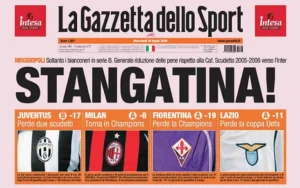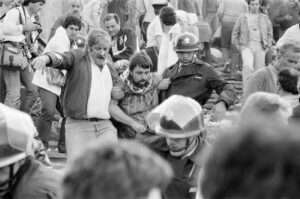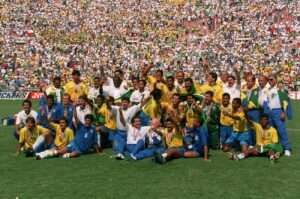Luis Figo became one of Spanish soccer’s all-time villains when he moved from Barcelona to arch rivals Real Madrid in the summer of 2000.
As if joining the Catalans’ bitter enemy was not enough, he had claimed in the lead up to the transfer that he was staying at Barca where he was a fans’ idol, having played 172 La Liga games, scoring 30 goals. This was one aspect of the deal that particularly enraged
the Camp Nou faithful, who had grown attached to a marvelous winger who had the ability to beat defenders through sheer technical ability rather than pace.
Brought to Barcelona from Sporting Lisbon by Johan Cruyff, Figo was a player who had become captain and could boast two league titles, two cups and a Cup Winners Cup during his time at the club.
Florentino Perez, he of Real Madrid’s famous galactico era, was the man who made the deal happen. Perez pledged to Real Madrid supporters that if they elect him as president, he would deliver them Figo.
In the build-up to the presidential elections, Perez revealed that he had a pre-contract agreement with Figo, meaning he would move to the Bernabeu as long as the 10 billion peseta (US$56 million) release clause was paid. Few believed the deal would happen, with most of the opinion that a deal of such magnitude was undeliverable and that Perez was employing desperate tactics to get votes. But his promise to refund all 70,000 season-ticket holders
if Figo did not arrive got members’ tongues wagging, and suddenly people started to believe.
From the moment that Figo’s agent Jose Veiga signed the agreement with Perez, the businessman had the Portugal international right where he wanted him, for had Figo reneged on the agreement, he would have had to pay a fine of 5 billion pesetas (£18.75 million). That Figo had such an agreement and then denied it even existed was an act of pure treachery for the Barca cules (supporters).
Perez knew he had a difficult task in persuading members that he should be elected ahead of incumbent president Lorenzo Sanz who had overseen Champions League victories in 1998 and 2000. He had to go for the jugular.
Perez won the election and on Monday 24 July the world record transfer was announced to a stunned media.
“I’m happy to be here,” said Figo at his presentation. “It was a difficult and important decision, but on top of everything, at this moment, I had to think only of myself and for that reason I made this decision”.
Just days before the deal was announced, Figo had posed in a Barca shirt in the Sport publication, now he was being paraded in the attire of the club’s most hated rival.
The new Barcelona president Joan Gaspart was incandescent: “We aren’t going to start anything but, and I don’t want this to sound like a threat, I’m not going to forget this. Someone who does this to me will pay for it.”
Figo received a torrent of abuse on his first return to Camp Nou in October of 2000, and was spared the responsibility of taking corners for fear of being hit by the numerous flying objects that would come his way.
But two seasons later, and with passions still running high, Figo was the subject of an unusual form of protest. It was decided that on this occasion he would take the corners and in amongst the lighters and plastic bottles was a pig’s head that had also been thrown from the stands.
The match, which ended 0-0, also had to be suspended for 12 minutes amid the pandemonium which saw Real players shielded by riot police as they sat in the dugout.
Figo went on to lift the 2002 Champions League with Real – something he never achieved with the Catalans – but this was undoubtedly one of the bravest transfer moves ever made by a professional sportsman.






